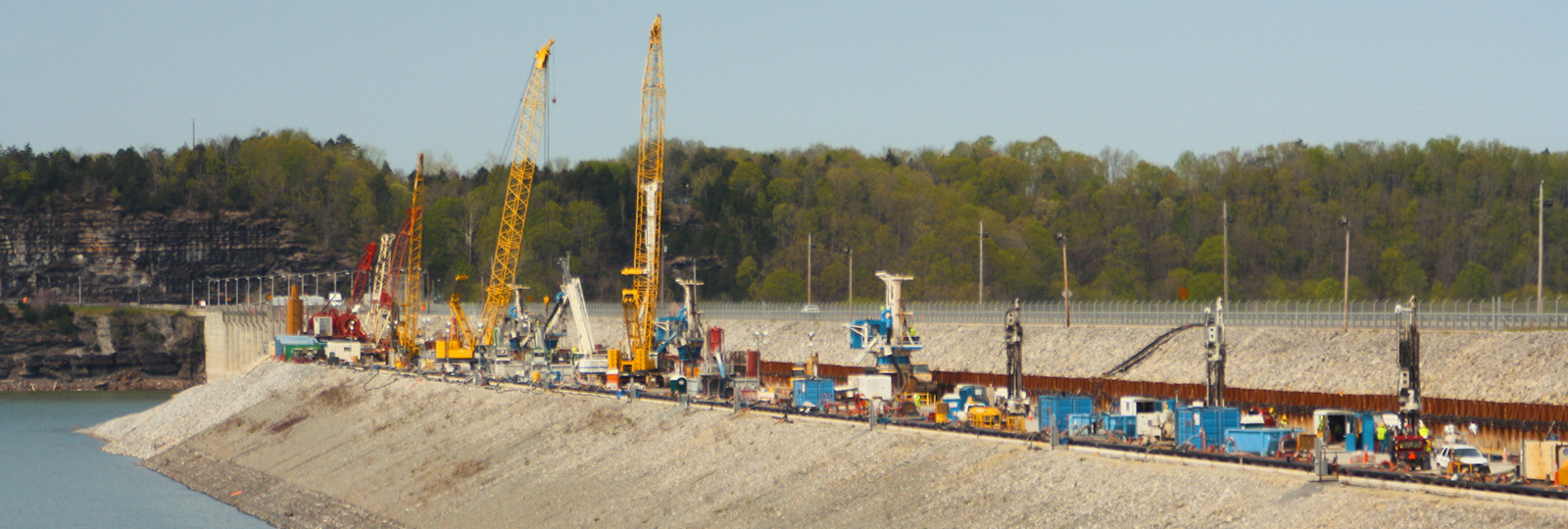Cut-Off
When the only requirement is to construct a continuous, watertight barrier, capable of accommodating some movements and deformations, the use of slurry walls filled with plastic concrete is the preferred method. It has been applied extensively for dam cut-offs both under the proposed structure and as a mean to repair existing ones. Waterproof cut-off are installed by removal of in-situ material, replaced with engineered materials with extremely low permeability, or by modifying the permeability properties of the existing soil. The main feature of plastic diaphragms, with self-setting water and cement or bentonite mixes, is that they guarantee a barrier with a low level of permeability and whose highly plastic properties make them capable of supporting subsequent ground settling movements without breaking or cracking.
The thickness of plastic diaphragms varies from 1.9 to 4.9'', and they are undoubtedly the most widely used for the construction of soil containment barriers. Plastic diaphragms can be integrated with a HDPE membrane, which is a sheet of high density polyethylene inserted into the plastic diaphragm. Diaphragm walls containing this synthetic material guarantee extremely high levels of imperviousness, and greater resistance to certain contaminating agents. The maximum installation depth is about 98 ft. The barrier of secant piles is a technique mainly applied in those situations where the logistics of the project make it difficult to construct a diaphragm by panels. Generally they are used to produce walls of piles with diameters varying from 23 to 60'', constructed using quick, self-setting mixes or concrete.




